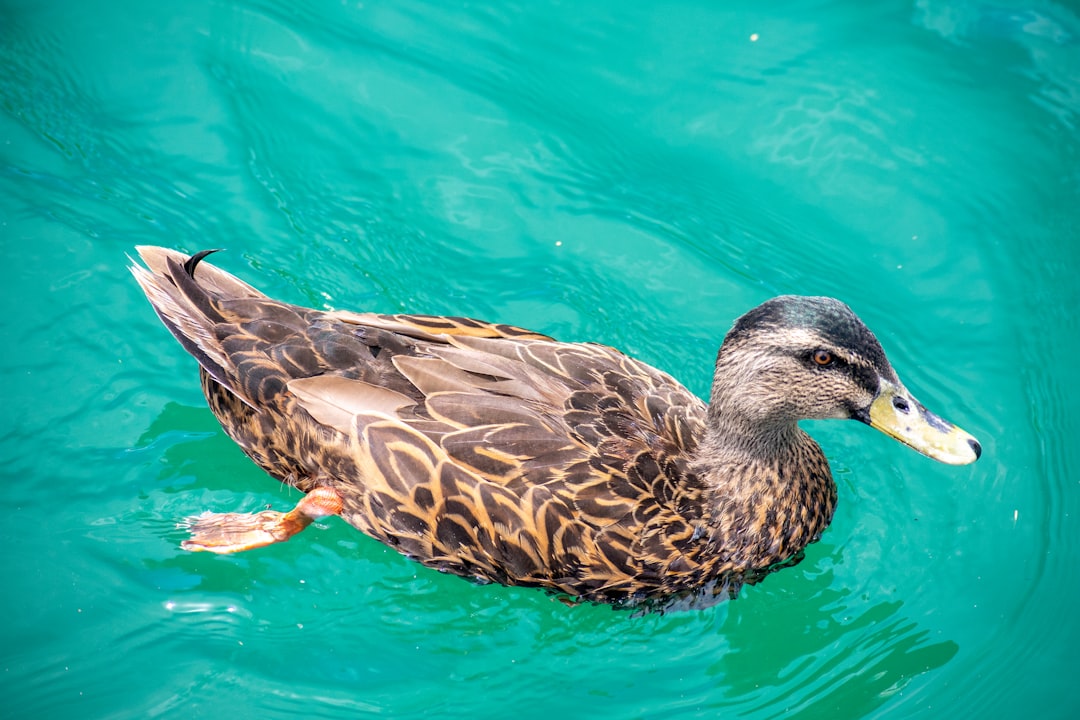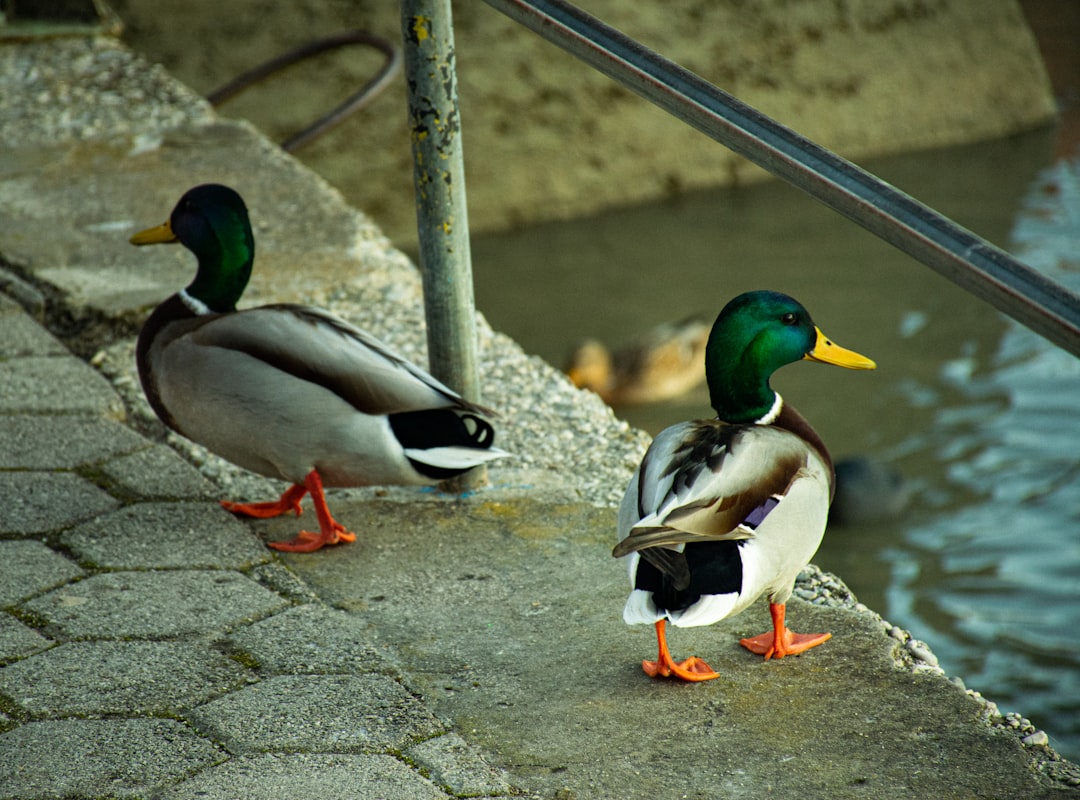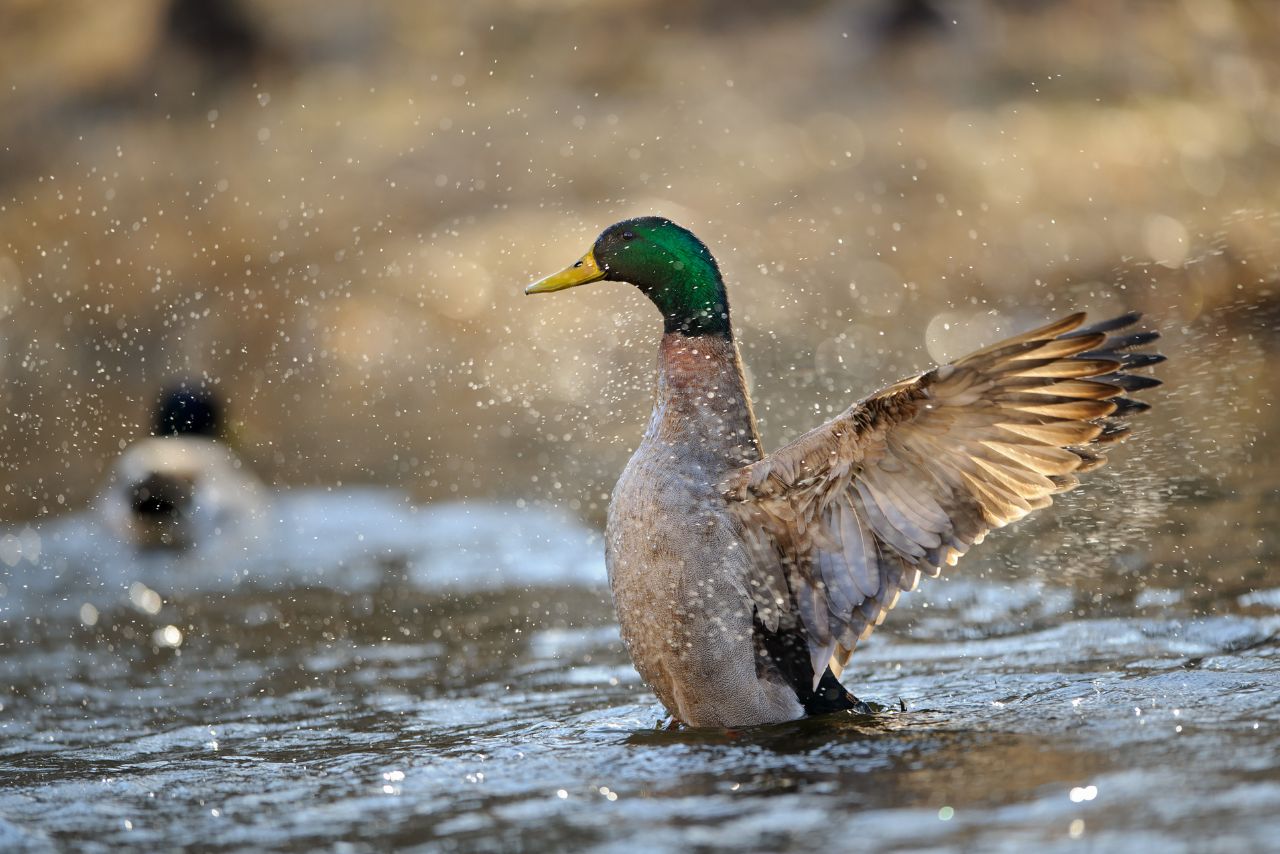Ducks are fascinating creatures that can be found in many different bodies of water around the world. One of the most interesting behaviors that ducks exhibit is the way they bob their heads.
Whether they are swimming, walking, or simply standing still, ducks seem to have a natural inclination to bob their heads up and down. So, Why Do Ducks Bob Their Heads?
Ducks Bobbing their heads up and down, experience moments of excitement and joy when reunited with a long-lost duck friend, when rewarded with delicious treats, when their swimming pool is newly cleaned and refreshed, and when they gather with their duck community for a fun-filled pool party.
In this article, we will explore some of the most popular explanations like this Why Do Ducks Bob Their Heads?
Some researchers believe that head bobbing may be a form of communication among ducks, helping them to establish social hierarchies within their flocks.
Why Do Ducks Bob Their Heads?
There are several reasons why ducks bob their heads. Here are some of the most common:
In some cases, ducks may bob their heads for other reasons, such as when they are feeling excited or agitated. The most common reasons for head bobbing in ducks are courtship, flirting, grooming, perception, and balance.
Here are some additional details about each of these reasons:
Courtship: Male ducks often bob their heads up and down in a synchronized manner. This behavior is thought to be a way of attracting females and demonstrating the male’s fitness as a potential mate.
The male’s head bobs may be accompanied by other displays, such as wagging his tail or quacking.
Flirting: Ducks of both sexes may bob their heads as a way of flirting with each other. This behavior is often accompanied by other displays, such as wagging their tails or quacking.
The female may bob her head in response to the male’s bobs, or she may initiate the bobbing behavior herself.
Grooming: Ducks bob their heads when they are grooming themselves. This helps them to clean their feathers and remove any dirt or debris.
The duck will often use its beak to scratch its head and neck, and it may also bob its head up and down in the water to help dislodge dirt or debris from its feathers.
Perception: Ducks have a very wide field of vision, but their heads are relatively small. By bobbing their heads, they are able to scan their surroundings more effectively and get a better sense of their environment.
This is especially important for ducks that live in areas with a lot of vegetation, as it allows them to see predators that may be lurking in the shadows.
Balance: Ducks have a long neck and a heavy body. When they walk, bobbing their heads helps them to maintain their balance. This is especially important for ducks that are walking on uneven surfaces, such as rocks or logs.
What Is Head Bobbing In Ducks?
Why ducks bob their heads is still a mystery, there are several plausible explanations.
Whether it’s to maintain balance, scan their surroundings, or communicate with each other, head bobbing seems to be an integral part of a duck’s behavior.
As you watch these remarkable creatures in action, take a moment to appreciate this unique and interesting behavior that has captivated researchers and birdwatchers alike.
Ways Ducks Communicate Other Than Bobbing
1. Whistling
In addition to head bobbing, ducks also communicate with each other through a variety of vocalizations, such as quacking, hissing, and whistling.
These sounds are used to signal danger, locate mates or offspring, and establish dominance within the flock.
2. Wing Flapping
Another way in which ducks communicate with each other is through wing flapping. This behavior is most commonly observed during courtship displays, where males will flap their wings to attract the attention of potential mates.
Wing flapping can also be used as a form of aggression, with ducks using their wings to assert dominance over others in their flock.
3. Tail Wagging
Ducks also communicate with each other through tail wagging. This behavior is typically observed during courtship displays, where males will wag their tails to attract the attention of females.
Tail wagging can also be a sign of aggression or dominance, with ducks using their tails to assert their social status within the flock.
4. Bubble Blowing

Ducks also communicate with each other through bubble blowing. This behavior is most commonly observed during courtship displays, where males will blow bubbles in the water to attract the attention of females.
Bubble blowing can also be a sign of aggression or territoriality, with ducks using it to defend their space from others.
5. Vocalizations
Head bobbing is just one of the many ways that ducks communicate with each other and interact with their environment.
The exact reason for this behavior remains a mystery, it’s clear that it serves an important purpose in the lives of these fascinating creatures.
By studying their behavior and communication methods, we can gain a deeper understanding and appreciation for these remarkable birds.
6. Body postures
Wing flapping, body postures are another way in which ducks communicate with each other. For example, a duck may lower its head and spread its wings as a sign of aggression or dominance.
On the other hand, a duck may tuck in its head and neck as a sign of submission or fear.
7. Displays of plumage
Displays of plumage are another way that ducks communicate with each other. During courtship displays, males will often flaunt their colorful feathers to attract the attention of females.
This behavior is not exclusive to ducks and can be observed in many bird species that use bright plumage as a means of attracting mates.
Why Do Male Ducks Bob Their Heads?
Head bobbing is a behavior observed in both male and female ducks, males are more likely to engage in this behavior during courtship displays.
Some researchers believe that head bobbing may be a way for male ducks to signal their interest in mating or to establish dominance over other males competing for the same female.
Why Does My Female Duck Bob Its Head?
While head bobbing is more commonly observed in male ducks during courtship displays, females may also engage in this behavior for various reasons. It could be to scan their surroundings or communicate with other ducks.
Females may also bob their heads when they feel threatened or uncomfortable in their environment.
Why Do Ducks Bob Their Heads when Eating?

Ducks also bob their heads when eating, but the reason behind this behavior is different from head bobbing during courtship displays.
When ducks eat, they need to keep their bills aligned with the surface of the water or ground to be able to scoop up food efficiently. Head bobbing helps them adjust their vision and maintain their bill’s position while eating.
Why Do Ducks Thrust Their Heads Forward?
In addition to head bobbing, ducks may also thrust their heads forward for various reasons. This behavior is often observed when ducks are searching for food in shallow water or on land.
By thrusting their heads forward, they can reach further and scoop up food more efficiently. This behavior is also seen when ducks are drinking water or preening their feathers.
5 Reasons for Head Bobbing In Ducks
1. Joy or Happiness

Joy or happiness head bobbing in ducks is a natural behavior that is commonly observed in these feathered creatures. This head bobbing movement is a sign of contentment, joy and relaxation.
It is usually seen in ducks when they are floating on the water or resting on land.
2. Flirting With Mate
Flirting with mate head bobbing is a common behavior among ducks, especially during the breeding season.
It is important to note that this behavior can sometimes lead to head bobbing injuries. Head bobbing injuries occur when ducks repeatedly and forcefully hit their heads against hard surfaces, such as walls or floors.
3. Preparing To Mate
When preparing to mate, one of the common behaviors that ducks display is head bobbing. Head bobbing is a movement where the duck lowers its head towards the ground and then quickly raises it back up.
This behavior is particularly common in male ducks and is often accompanied by vocalizations. The purpose of head bobbing is to display dominance and attract a female mate.
4. Establish Dominance
If you’re a duck owner, you may have noticed your feathered friends engaging in a peculiar behavior known as head bobbing. This motion involves the duck rapidly moving its head up and down in a rhythmic pattern.
It may seem like a harmless quirk, head bobbing is actually a way for ducks to establish dominance within their social hierarchy.
When two ducks are vying for the top spot, they may engage in a head bobbing battle, with the loser submitting to the winner.
5. Warning Other Ducks
If you notice other ducks head bobbing, it’s important to be aware that this could be a sign of aggression. Head bobbing is a common behavior in ducks, but it’s not always a friendly gesture.
When ducks are feeling threatened or territorial, they may bob their heads rapidly up and down as a warning to other ducks to stay away.
Conclusion: Why Do Ducks Bob Their Heads?
Head bobbing is a common behavior observed in ducks. While it is often associated with courtship displays, ducks may also bob their heads for other reasons such as adjusting their vision while eating or searching for food.
Head bobbing can be a sign of joy, preparing to mate, establishing dominance, or warning other ducks.
Any excessive head bobbing should be investigated for signs of injury or illness. With proper care and attention, you can enjoy the unique personalities and behaviors of these fascinating feathered creatures.
FAQs
Why Do Ducks Bob Their Heads?
Ducks bob their heads for various reasons, such as adjusting their vision while eating or searching for food.
Is Head Bobbing a Sign of Joy in Ducks?
Yes, head bobbing can be a sign of joy, happiness, and relaxation in ducks.
Do Ducks Bob Their Heads when Preparing to Mate?
Yes, ducks may display head bobbing behavior when preparing to mate, especially male ducks who use it to attract a female mate.
Can Head Bobbing Lead to Injuries in Ducks?
Yes, head bobbing injuries can occur when ducks repeatedly hit their heads against hard surfaces. It’s important to provide enough space for ducks to move around freely and avoid overcrowding.
Is Head Bobbing Always a Friendly Gesture in Ducks?
No, head bobbing can also be a sign of aggression in ducks, especially when they feel threatened or territorial. It’s important to monitor their behavior and intervene if necessary to prevent fights.




